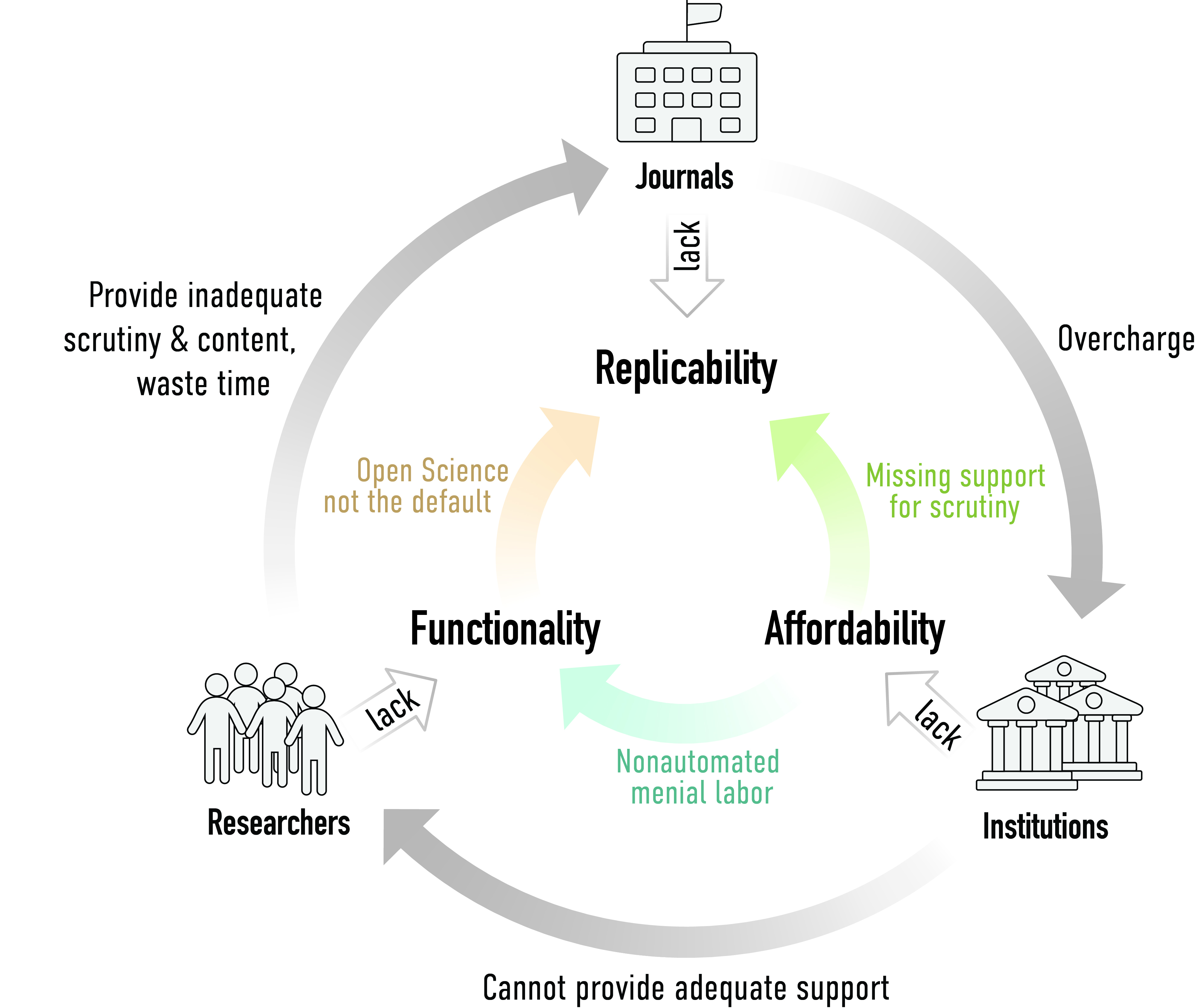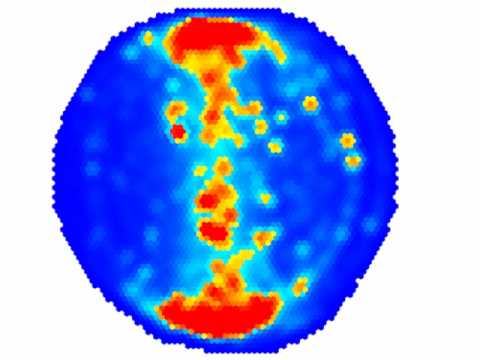More and more experts are calling for the broken and destructive academic journal system to be replaced with modern solutions. This post summarizes why and how this task can now be accomplished. It was first published in German on the blog of journalist Jan-Martin Wiarda.

Front cover of the now-vanished Australasian Journal of Bone & Joint Medicine . Source: Scan from the-scientist.com website
SOMETIMES PAPER IS USEFUL: The gritty scan above from The Scientist’s website is one of the few traces left of the Australasian Journal of Bone & Joint Medicine. The journal was part of a bundle of fake journals that the academic publisher Elsevier offered as peer-reviewed journals, but which were actually paid advertisements – including for the drug Vioxx from the pharmaceutical company Merck, which was withdrawn from the market after unreported deaths surfaced and were litigated.
The nine fake magazines are just one example of decades of exploitation of science by academic publishers: From their attempts to either criminalize Open Access via the Research Works Act or discrediting it with PR, to fighting green open access, to going behind the backs of negotiating partners, or, currently, surveilling scientists by installing tracking technologies on their publishing platforms – as well as constructing a new Silk Road of Science Communication through collaboration with Chinese authorities. At a time when the political culture (and tribal) wars have spilled over into the field of science and when trust in the honesty and reliability of research has become more important than ever, the scholarly publication system through which science enters the public, is becoming more and more dubious.
Perhaps not entirely coincidentally, for the biggest publishers, their publications have only played a relatively minor role for about ten years now. Long-term pricing schemes have provided them with steady revenue that exceed publication costs by around a factor of ten. This windfall has been filling their war chests for numerous acquisitions that have enabled the publishers to rebrand themselves as data analytics businesses, analogous to the large Internet companies. The purchased tools now span the entire research life cycle: Databases, electronic laboratory notebooks, analysis tools, authoring systems and bibliometrics are linked with the publishing platforms to create a “live trap for researchers” from which data can be continuously extracted in order to monetize them.
Ireland’s Science Foundation, for example, has just signed Elsevier to analyze its future direction, and no one asked where the “vast array of data” that the company brought with it, actually came from.
A trinity of failures: reliability, affordability, functionality
This development leads to a trinity of failures in the academic publication infrastructures:
o The systemic pernicious incentives of publish or perish fuel the replication crisis in many disciplines: publications in the most renowned journals promote careers, but at the same time the most unreliable science is published there.
o The commercialization of Open Access turns the long-standing serials crisis into an article crisis: the costs rise inexorably if only the direction of the payments is turned from reading to publishing and the system otherwise remains under the regime of monopolists (which have long since outgrown the status of major publishers), and continues to provide profits free from competition.
o The focus of the ex-publishers on user data, of researchers on publications and of institutions on cash flow and rankings led to a functionality crisis in which some of the most basic digital functionalities remain out of reach for research objects.
We can now switch at any time
Precisely because the scientific journals are at the center of this trinity of failures, experts have been calling for a modernization of information infrastructures in science for at least 15 years. In fact, the first calls for radical reform can be traced all the way back to the the late 1990s. Several possible alternatives are now available, such that we could switch at any time now.
Out of these alternatives, let’s pick the publication platform “Open Research Europe” (ORE) as only one example. Researchers funded by the European Union publish in ORE free of charge and open access. ORE is a platform owned by the EU and not by a publisher. The EU can replace the publication service provider with a different one if it is not satisfied with the provider. This creates real competition for publication services that is impossible in the reputation-based journal system. ORE is part of the “Open Research Central” (ORC) service, in which publication platforms such as ORE are aggregated into a common literature corpus, so that all institutions can, in principle, find their place here.
The academic publishers were already a platform economy long before the well-known Internet companies adapted this principle in order to secure their dominant market position. Also the legacy publishers abuse their unassailable position in the scientific system, which links publications with the collection of metrics of prestige. Long before services like ORC were developed, it was therefore clear that a journal replacement would have to make a clean cut with this logic of the platform economy: because it locks-in scientific communication in a similar way how WhatsApp and other messengers lock-in private communication – even though before these messengers there were already protocols and standards for e-mail that enabled the exchange of service providers. The recent Facebook downtime again reminds us all that protocols and standards are superior to platforms.
Consequently, the traditional magazines must be replaced by a decentralized, resilient, evolvable network where everything is connected by open standards and protocols, that much has been clear for at least two decades now. Such a network allows for seamless switching from one provider to another under the control of the scientific community and would allow the journal article as the only scientific output that “counts”, to fade into the background. Instead, the focus would then be on the interwoven web of text, data and code, which would provide a much better orientation function for scientific knowledge than the journals have ever been able to do. The concept behind services like ORC is aimed precisely at developing such a decentralized information infrastructure.
It can work without slaughter
Academic journals are far from such an infrastructure and are therefore either considered already dead, or one would like to ensure that they will be soon: “Slaying the journals” is the slogan of one initiative, and in view of the painful experiences with journals over the decades, this version of “eat the rich” will certainly sound attractive to a number of scholars.
Not invoking any kind of slaughter, we have recently posted our own detailed proposal for a solution that contains two novel approaches for tackling the trinity of failures:
- First, we propose that research funders expand the existing minimum requirements for the infrastructure of recipient institutions, namely by the decentralized information infrastructures mentioned above. In that way, the journal alternatives become the staple of good (and ultimately more prestigious) scientific practice. The decades-long standstill in digital infrastructures at academic institution evinces that these modernization incentives are obviously needed in order to phase out funding of the overpriced and outdated journals and instead invest in modern technologies.
- Second, we suggest to establish open standards and open source norms that guarantee an efficiently functioning market and prevent further monopolies on scientific tools or output. This is elementary because so far the solutions developed from the scientific community have been bought up by the relevant players so that no alternative ecosystems can develop. Such open standards already exist and promise, like the FAIR principles, to ensure scientific quality and good practice. In order to expand, secure and enforce these standards and norms, we propose setting up a standardization body like the World Wide Web Consortium (W3C) – under the governance of the scientific community, to enable the development of open scientific infrastructures that support the entire research process.
In the long-standing discussion about an academic journal replacement, opposition has traditionally been voiced by referring to journal prestige, the guidance it offers, and how this issue could not be resolved without journals. However, this argument misses two essential aspects: First, the reputation of the journals lacks any empirical basis and therefore does not represent a valid source for evaluations. To combat the wide-spread misuse of journal prestige, initiatives have sprung up such as the San Francisco Declaration of Research Assessment, to which now both the German funder DFG and the European Research Council are now signatories. Second, we know from the data that the ex-publishers sell, that there is, of course, an endless number of quantitative and qualitative evaluation options that are based entirely on the researchers’ daily interactions with their digital research objects. However, these fine-grained data are not in the hands of science, but in the possession of the ex-publishers, who, as the chairwoman of the German Council for Information Infrastructures, Petra Gehring, recently wrote, “consider the entire intellectual cycle of publicly funded and hence free research, as their future product”. Soon, such algorithmic employment decisions may make the misuse of journal rank seem benign in comparison.
Will scholarship keep repeating the same mistakes?
The Irish example can serve to illustrate Gehring’s tough statement: “The globalized struggle for profitable markets that these new forms of value creation offer, was not recognized.” It would be downright absurd for publicly funded science to repeat the same mistake now also with research and user data, as it did with publications: first the taxpayer pays for the production and then again when science buys back its own product. If the current system were to be continued, scholars would again be at the mercy of the corporations, and neither could the funding agencies ensure that society benefits from the knowledge and the potential for added-value in the data.
The current debate about digital sovereignty makes no sense without a decisive redirection of funds away from journals and towards open infrastructures and their upgrade towards a basis for building reputation. After 30 years of stagnation, this redirection would finally put an end to the trinity of failures in the academic publication system.
I am grateful to Renke Siems who drafted the first version of the German article and who insisted on more diplomatic language than I usually use.














